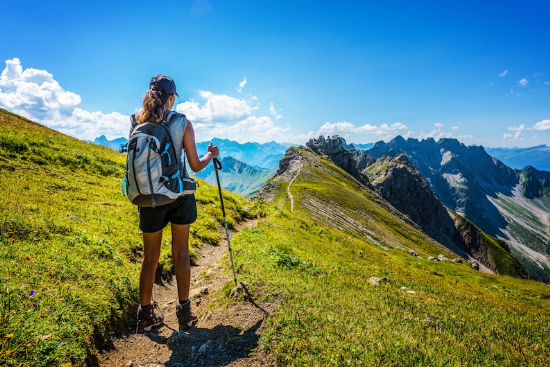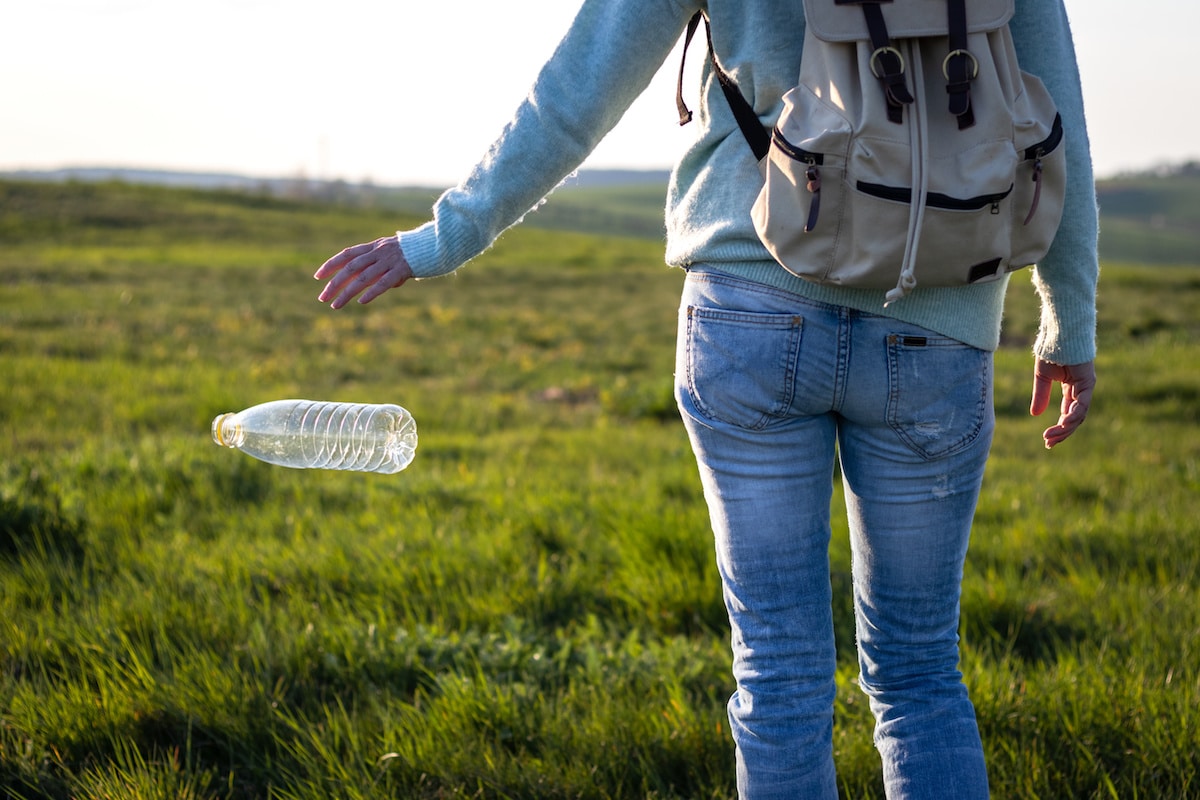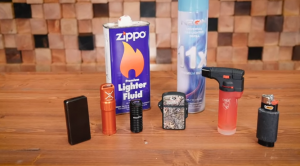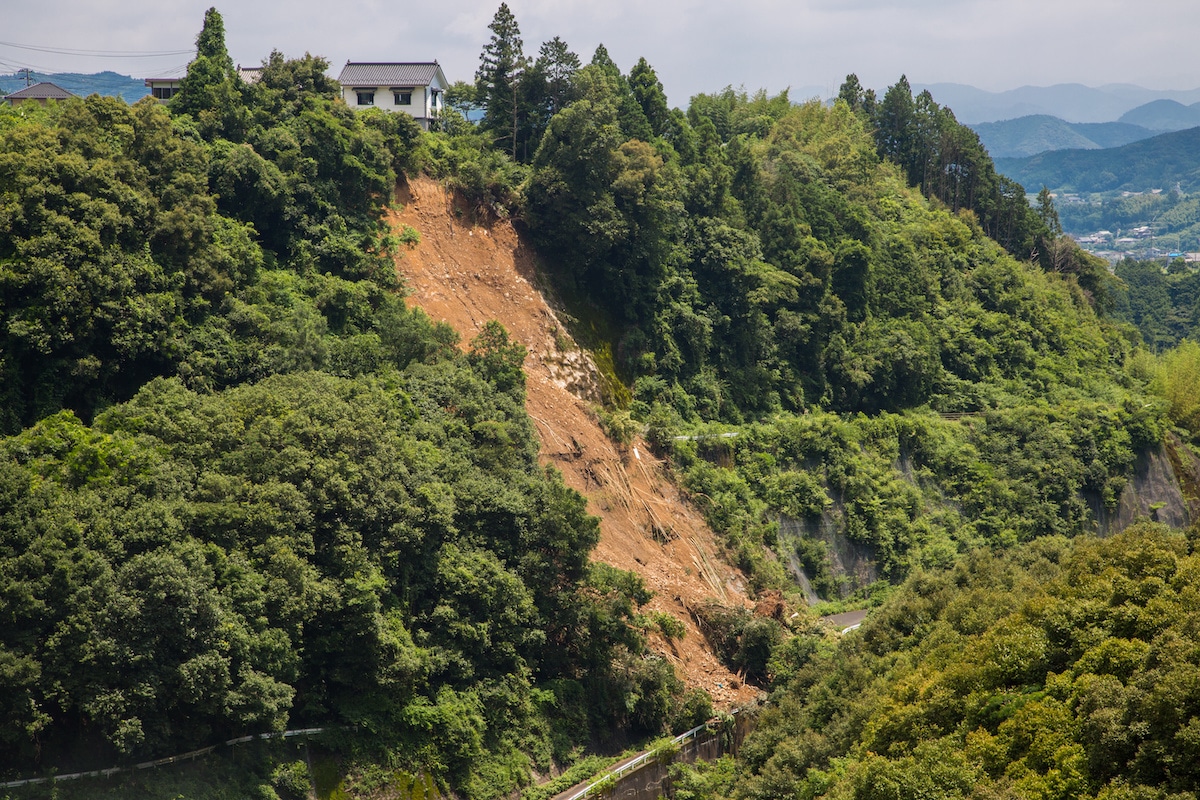Camping provides a mental and physical escape from the busy schedule of everyday life, which makes preserving the beauty of nature essential to keeping this pastime alive.
What We'll Cover
- The Seven Principles of “Leave No Trace”
- Plan Ahead and Prepare
- Travel and Camp on Durable Surfaces
- Low-Impact Hiking Etiquette in the Backcountry
- In Pristine Areas
- Tips for Finding a Camp for the Night
- Dispose of Waste Properly
- Leave What You Find
- Minimize Campfire Impact
- Respect Wildlife
- Be Considerate of Other Visitors
- Conclusion
“Leave No Trace” camping keeps these natural areas intact for the protection of wildlife and the enjoyment of campers, including yourself, for years to come. Whether it’s to properly dispose of the wastewater from your camping kitchen or to practice proper camping etiquette, Leave No Trace refers to the idea of making your presence in nature unknown and minimizing your lasting impact on the surrounding habitats.
The Seven Principles of “Leave No Trace”
These seven principles of “Leave No Trace” camping provide a guide for making your presence in nature unknown and minimizing your lasting impact on the surrounding habitats so everyone can continue to enjoy nature for a long time to come. These principles are:
- Plan ahead and prepare
- Travel and camp on durable surfaces
- Dispose of waste properly
- Leave what you find
- Minimize campfire impacts
- Respect wildlife
- Be considerate of other visitors
Plan Ahead and Prepare
Proper planning helps prevent poor performance. Because you cannot readily access more resources, you want to anticipate all possible situations. Set realistic daily goals to keep your group happy, safe, and on-track.
Mapping Out Your Trip
You’ll want to plan your trip during an ideal time of year to benefit your group and your environment. Choose the area you want to visit and try to determine a quieter season. Busier times like weekends, long holidays, and breaks from school mean local parks and campsites will be filled with people. Not only will this make it harder to find low-impact campsites, but it also increases the amount of erosion to the area.
Research the safety warnings, hazards, weather, and regulations for your area related to wildlife, fire bans, flash floods, and more. Being knowledgeable about your desired travel route ensures you bring the right clothing and supplies and prevents you from breaking any laws.
You want to challenge your group without overextending them. Plan your days with the capabilities of your fellow campers in mind, and schedule reasonable stopping points to set up camp. You’ll want ample daylight to find a safe, low-impact site.
Camping Resources to Bring
- Invest in a purifying system or pack more than enough water to last in the case of an emergency
- Make sure you have enough food and snacks for everyone in your group
- Repackage food in reusable snack bags to reduce waste and save space
- Bring a map and compass to remove the need for tree markers and other flags that will cause damage
Travel and Camp on Durable Surfaces
Many areas—especially highly trafficked destinations—will have distinct paths. Although these human-made trails are an impact, they decrease excessive damage that would be caused by several smaller trails. Do your best to remain on clear paths and avoid making your way off-trail.
Low-Impact Hiking Etiquette in the Backcountry
When camping or hiking, it should be as if you were never there. Using existing trails and campsites rather than creating new ones lessens your impact on the area. Regardless of your group size, walk in a single file line down narrow pathways and refrain from zigzagging off the path. Your group could unknowingly expand the width of the trail and cause further erosion.
Always look for dry grass, rocks, gravel, or snow to travel on, as these materials are resilient and can bounce back from light wear and tear. If you are walking on snow, check that it’s deep enough that you won’t crush the vegetation underneath.
In Pristine Areas
In the event that you encounter lush fields or meadows, disperse your group so that you do not begin to trample a path. Forming trails, even fresh ones, will invite other hikers to follow suit and cause irreversible impacts from repetitive trampling.
Additionally, refrain from leaving trail markers and stacked rocks, as rock stacking can damage the environment the rocks are taken from.
In the same way, if you choose to camp in these remote areas, be sure to spread out your tents and vary the paths you take to different points of your site. Do not camp at the same location for more than a day to minimize the damage and allow the area to return to its natural state.
After thoroughly cleaning your site, take a minute to disperse natural materials like leaves and moss, remove footprints and fluff up matted grass. Try to make the area look as undisturbed as possible. This action may prevent other campers from coming across this site and further impacting it.
Tips for Finding a Camp for the Night
- Look for established sites free of vegetation; opt instead for dry grass, clearings, or sand
- Keep your sites small
- Set up at least 200 feet (approximately 70 paces) away from lakes, streams, and other water sources
Dispose of Waste Properly
You can’t guarantee that the group before you will clean up, but you can be sure of your actions and help to rectify theirs. Properly disposing of all waste keeps everyone healthy and avoids widespread contamination and pollution.
Human Waste
Be sure to research the waste disposal regulations for your intended area. Highly populated sites typically require that all feces be packed out to avoid overuse of cat holes and avoidable health risks. EPA-approved sanitary systems make it safer and easier to transport these materials while backpacking.
Always pack out toilet paper (used sparingly) and feminine hygiene products. Under no circumstances should you burn these materials, as they may not fully disintegrate.
Cat Holes
If permitted, the most common way to dispose of waste is through burial. Digging a proper cat hole with adequate sun exposure helps keep areas sanitary while accelerating the decomposition process. Try to look for remote places where others will not be walking or camping to avoid awkward encounters. Also, look for areas of elevation to prevent the waste from joining the runoff or rainwater.
How to Create a Cat Hole
- Choose an area 200 feet away from water, camp, and trails
- Dig a hole about 6-8 inches deep and 4-6 inches wide
- Cover the hole and disguise it with natural material
With large groups or extended stays, disperse your cat holes around the area and don’t go to the same place twice. You may even decide that a camping latrine better meets your needs in these situations. However, you should be mindful to safely dispose of any wastewater afterwards.
Urine
Urine can attract wildlife, so dilute your stream with a bottle of water. Going on rocks, gravel, or pine needles may reduce the attraction to this smell.
Other Waste
“Pack it in, pack it out.” Anything you bring on your trip, should make its way out with you, including trash, leftovers, and even spilled food. Organic litter like fruit peels and nutshells should be collected as you leave, even if your group didn’t leave them.
Cleaning Dishes
Take your dishes 200 feet away from water sources when you wash them in your camping sink or wash basin if it does not contain greywater within its system. As you wash them, employ minimal amounts of biodegradable dish soap when necessary and allow the excess water to collect in a bowl. Strain your dishwater and pack away the food particles with your trash. Scatter the liquid in different areas to prevent build-up and odors that might attract animals.
Cleaning Yourself
Although tempting, refrain from bathing in water sources. Your natural oils, lotion, sunscreen, repellants, and other fluids can contaminate the water for land and aquatic animals. Similar to the dishes, find an area about 200 feet away from water sources. Fill containers with water for your bath and use biodegradable, unscented soaps when necessary.
Leave What You Find
Likely you’ll encounter beautiful flowers, colorful rocks and other hidden treasures along your journey that will intrigue you. Leave these items where you find them so that others can enjoy them too. You may even come across cultural or historical artifacts and structures – look but don’t touch. Take lots of mental and physical pictures to capture the moments while leaving your surroundings intact.
When setting up your site, don’t build makeshift furniture by leaning objects against or nailing things into trees. Holes and trenches may make it easier to secure your tent, but these alterations can affect small underground ecosystems and the overall appearance of the site. If you move pinecones, leaves, and wood to create seating or make room, be sure to redistribute the shrubs and leave the place similar to how you found it.
Minimize Campfire Impact
Conduct your research to ensure that fires are permitted in your area and that weather can safely support the flames. Due to significant traffic, rangers may impose bans to account for the lack of firewood and the reduced appearance of natural spaces. When possible, use existing fire rings to avoid further impacting the environment. You should never burn plastic or foil wrappers, as it releases chemicals that are toxic to you and other animals. Always follow fire safety rules when building and being around a campfire.
Finding Firewood
Don’t bring your firewood from home as it can potentially introduce pests and foreign diseases to the area. Instead, you may be able to purchase some from a local vendor or gather it yourself. Spread out to collect wood away from camp, so you don’t strip the site of all its resources.
Standing and fallen trees are essential parts of the ecosystem to animals and insects. Don’t remove branches from these trees as it is a detrimental impact on the entire ecosystem and its beauty. Select down and dead wood no larger than the width of your wrist that can be broken by hand.
Cleaning Up Your Fire
Burn the firewood to white ash and completely distinguish the flame with water, even if there doesn’t appear to be a flame. While sand may seem like the obvious choice, it does not always fully extinguish the flame. Disperse the cooled ashes around the campsite so that animals don’t get into them. Before leaving, scatter your unused wood to restore the natural look of your site.
Items that Reduce your Impact
- Camping stoves: These are flexible, easily stored, and more importantly, they leave no trace. For large groups, place one large pot over two stoves for one-pot meals.
- Candle lantern: This light source replaces the need for the firelight. Stargazing becomes much easier without the brightness of the flames.
Respect Wildlife
Always remember that you are guests in the wildlife’s home, not the other way around. When interacting with the native wildlife, a general rule of thumb is to maintain your distance and keep your noise level to a minimum. Beware of animals that are mating, nesting, or with their young, and take extra precaution during winter.
Interacting With the Animals
Do not approach the animals, and refrain from sudden movements and loud noises that will startle them. Rather, bring binoculars or use the zoom on your camera to get a closer glimpse. Maintain your distance at watering holes as well – at least 200 feet. Gathering your water during the day gives native animals the freedom they need at night when they are more active.
Do not pet or pick up wildlife because it can transfer disease and increase your risk for bites and scratches. Contact a ranger to report sick animals.
Your pup may be used to table scraps, but human food doesn’t mix well with wild animals. Feeding wildlife negatively impacts their health, affects their instincts, and attracts predators – so don’t do it.
Securing Your Camp
Keep your campers and other animals safe by securely storing your trash and food in a bear canister. Plan meals that won’t produce overly fragrant garbage, so you don’t attract wildlife to your campsite, especially in bear country. If you choose to bring your dog camping, keep them under control. Unleashed dogs may get loose, lost, or worse.
Some garbage may be stored in a collapsible trash can, but keep in mind that food-based garbage should only be discarded in bear-safe containers to keep animals away.
Be Considerate of Other Visitors
Depending on the timing of your trip and the popularity of the area, you may encounter other campers along the way. Showing mutual respect and consideration sets an example for your group and creates a communal environment.
Everyone enjoys the outdoors differently, so be courteous of others’ space, including sounds and sights. While you may enjoy hiking with background music, some campers prefer the quiet serenity found in nature. Consider using headphones to give everyone their best experience. For further noise control, take breaks off the trail to talk with your group rather than yelling during your hike.
It can be hard to take in the beauty of nature when you’re distracted by families camping at their sites or other hikers wearing extremely bright clothing. You can enhance your experience by setting your campsite away from the path in a covered area. Similarly, earth tones blend in with the scenery and invite minimal attention so that you and other hikers can feel immersed in your surroundings. Not only will you benefit from the serenity and privacy, but you will also extend those same courtesies to other campers.
Rules for Sharing the Path

- Hikers going downhill should allow those traveling uphill to pass quickly
- Hikers should yield to those on horseback, while bikers should yield to both hikers and equestrians
- Step to the downhill side of the trail to let groups of livestock pass
- If you must stop to take a break, be sure to move away from the path
- Listen out for fellow campers on the trails that may be trying to pass you from behind
Conclusion
As you gain experience with the outdoors, you will become more efficient at implementing the “Leave No Trace” principles. Even if you can’t remember all the rules of camping, simply considering your impact on the environment and others will encourage sound decisions during your excursion. The better we care for the living and nonliving things both on and off the trail, the longer the area will survive for everyone to enjoy.
The responses below are not provided, commissioned, reviewed, approved, or otherwise endorsed by any financial entity or advertiser. It is not the advertiser’s responsibility to ensure all posts and/or questions are answered.



![Best Archery Sets This 2023 [Men & Women]](/assets/images/8cf78150f1d9d7a0c175609145d21517.png)

